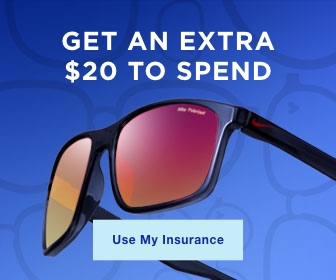What is a Comprehensive Eye Exam? A Step-by-Step Guide
Posted Jan 23, 2018 | Eye Health
An annual comprehensive eye exam provides much more than a determination of your prescription. It tests for everything from color blindness to blind spots and glaucoma, and can even reveal signs of high blood pressure or cancer. 

Because there are so many components, a comprehensive eye exam can take anywhere from 30 minutes to an hour, depending on the ophthalmologist or optometrist who is conducting the exam.
Here are nine of the most common issues that a comprehensive eye exam tests for so you know what to expect:
1. Visual Sharpness – Probably the most recognized test, a Snellen Chart is used to check visual acuity - the sharpness of your vision. The Snellen Chart features rows of letters that are large on the top and small on the bottom. You’ll be asked to read off the letters until you can no longer see them clearly.
2. Eye Alignment – Eye alignment is examined using an occluder, which is a small paddle that covers one eye at a time. The doctor will ask you to focus on objects that are far away and then have you do the same thing with objects that are close. This tests how well your eyes work together and could reveal if one eye is doing the work for both, which may cause eye strain or a lazy eye.
3. Color Blindness – There are millions of Americans who are color blind. Though it’s most often found in men, everyone is typically given this test. You will be handed a small book that features colorful dots that combine to show a number. Color deficiency would be indicated if you were unable to read the number or if it is very difficult to decipher.
4. Depth Perception – Depth perception, also known as stereopsis, is typically examined using another small book of patterns. This time you’ll wear special 3D glasses and be asked to point out which of four circles appears raised.
5. Extraocular Movement – This test evaluates the muscles that control your eye. The doctor will ask you to track a pen or other small object from left to right and back again.
6. Interocular Pressure – Also known as the puff test, non-contact tonometry measures the fluid pressure inside your eye. High pressure could indicate glaucoma or a propensity for developing it.
7. Blind Spots – A visual field test evaluates your central and peripheral vision to uncover issues with blind spots. There are four common visual field tests but your doctor may only conduct one unless a problem is uncovered. One of the tests is automated perimetry, which is where you sit in front of a machine with your chin on a strap and you press a button every time you see a vibrating light in your peripheral vision.
8. Eye Disease, Infection, and More – A biomicroscope, also known as a slit lamp, is used by your doctor to magnify your eye and look at your overall eye health. Your doctor will look at your retina, pupil reflexes, the optic nerve, and even the lens inside your eye. At the same time, you’ll be evaluated for signs of infection, such as redness or discharge.
9. Prescription – Of course, most people typically see an optometrist for their prescription. This is determined by autorefraction and/or refraction. Autorefraction is a process of estimating your prescription using an autorefractor, which can save time and has been found to be very accurate.
However, some doctors choose to do both an autorefraction and a manual refraction for the most accurate results. One method simply confirms the other. An autorefraction can also provide a starting point for the manual refraction. During a manual refraction the doctor uses a phoropter to show you a series of lenses. This is when your doctor asks something like, “Which is better, a or b?” Using your answer, the doctor will continue to adjust the lenses until you have your final prescription.
10. Optional - Contact Lens Fitting
Do you wear contact lenses? If so, your exam will include a contact lens fitting. The doctor will determine the correct curve, thickness, and diameter for a contact lens that will be comfortable in your eye and will suit your vision correction needs. If you are new to contact lenses, you’ll also receive coaching on keeping contacts clean, storage, and how to put them in your eye.
Now that you understand each part of your eye exam, you should feel more confident setting one up. It’s essential to giving your eyes a clean bill of health.
Ready to schedule your annual comprehensive eye exam? Use the Eyeconic Find a Doctor tool.
Sources